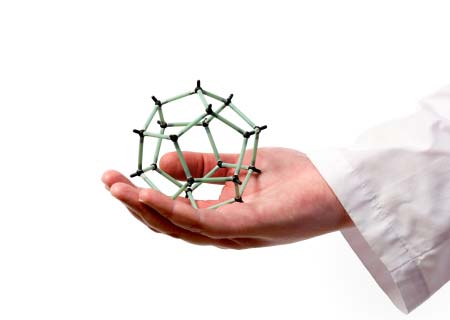
Nanoparticles, particles with dimensions measured in nanometers, have brought about significant advancements in various fields, including medicine. Their applications in medicine have revolutionized diagnostics, drug delivery, and therapeutic techniques, offering unprecedented precision and effectiveness. This article delves into nanoparticles’ diverse and transformative applications in the medical field, highlighting their roles in diagnostics, drug delivery, cancer therapy, and more.
Diagnostics
Nanoparticles have enhanced diagnostic techniques by providing high sensitivity and specificity in detecting diseases at early stages. For instance, their small size and large surface area allow for the attachment of multiple diagnostic agents, improving the accuracy of tests. In drug delivery, nanoparticles can encapsulate drugs, protecting them from degradation and controlling their release. This targeted delivery minimizes side effects and maximizes therapeutic efficacy.
- Imaging
Nanoparticles are widely used in imaging techniques such as magnetic resonance imaging (MRI), computed tomography (CT), and positron emission tomography (PET). For instance, superparamagnetic iron oxide nanoparticles (SPIONs) are used as contrast agents in MRI, providing clearer images of soft tissues and allowing for early detection of tumors and other abnormalities. Gold nanoparticles and quantum dots are employed in CT and PET scans, respectively, enhancing the resolution and contrast of images.
- Biosensors
Nanoparticles play a crucial role in the development of biosensors, devices that detect biological molecules. Gold nanoparticles, for instance, are utilized in lateral flow assays (similar to home pregnancy tests) to detect pathogens, biomarkers, and other molecules in body fluids. These biosensors offer swift, sensitive, and cost-effective diagnostic solutions for a wide range of diseases, painting a promising picture for the future of medical diagnostics.
Drug Delivery
One of the most significant applications of nanoparticles in medicine is in drug delivery systems. The use of nanoparticles in drug delivery offers several benefits. They can encapsulate drugs, protecting them from degradation and controlling their release. This targeted delivery minimizes side effects and maximizes therapeutic efficacy, making treatments more effective and patient-friendly.
- Liposomes
Liposomes are spherical vesicles composed of lipid bilayers that encapsulate hydrophilic and hydrophobic drugs. They enhance drug solubility, stability, and bioavailability. Liposomal formulations of drugs, such as Doxil (doxorubicin) and AmBisome (amphotericin B), are used in cancer therapy and antifungal treatments, respectively. These formulations reduce toxicity and improve the therapeutic index of the drugs.
- Polymeric Nanoparticles
Polymeric nanoparticles, made from biodegradable polymers like PLGA (poly (lactic-co-glycolic acid)), are used for controlled and sustained drug release. They can be engineered to degrade at specific rates, releasing the drug over extended periods. This property is particularly useful in chronic disease management, where long-term drug administration is required.
- Dendrimers
Dendrimers are highly branched, tree-like polymers with high surface functionality. They can carry multiple drug molecules and targeting ligands, allowing for precise targeting of diseased cells. Dendrimer-based drug delivery systems are being explored for their potential in treating cancer, infections, and genetic disorders.
Cancer Therapy
Nanoparticles have shown immense potential in cancer therapy, offering new approaches to diagnosing and treating various types of cancer.
- Targeted Drug Delivery
Nanoparticles can be functionalized with ligands or antibodies that recognize and bind to specific receptors on cancer cells. This targeted approach ensures that the therapeutic agents are delivered directly to the tumor site, sparing healthy tissues and reducing side effects. For example, the FDA-approved drug Abraxane, a nanoparticle albumin-bound formulation of paclitaxel, targets tumors more effectively than conventional paclitaxel formulations.
- Photothermal and Photodynamic Therapy
Gold nanoparticles and other nanomaterials can convert light into heat, a property utilized in photothermal therapy. When these nanoparticles are targeted to cancer cells and exposed to near-infrared light, they generate heat that destroys the cancer cells. Similarly, in photodynamic therapy, nanoparticles are used to deliver photosensitizing agents to tumors. These agents produce reactive oxygen species that kill cancer cells upon light activation.
- Gene Therapy
Nanoparticles are also being developed as carriers for gene therapy, which involves delivering genetic material into cells to treat diseases. Lipid nanoparticles, for instance, are used to deliver mRNA and DNA for gene editing and therapy. The recent success of mRNA vaccines for COVID-19, which use lipid nanoparticles to deliver mRNA, has highlighted the potential of this approach in treating genetic disorders and cancers.
Infectious Disease Treatment
Nanoparticles play a crucial role in diagnosing, preventing, and treating infectious diseases.
- Antimicrobial Nanoparticles
Nanoparticles such as silver, gold, and zinc oxide exhibit antimicrobial properties and are used to combat bacterial, viral, and fungal infections. Silver nanoparticles, in particular, have been incorporated into wound dressings, coatings for medical devices, and antimicrobial sprays due to their broad-spectrum antimicrobial activity.
- Vaccine Delivery
Nanoparticles are used to enhance the delivery and efficacy of vaccines. They can encapsulate antigens and adjuvants, protecting them from degradation and enhancing their immune response. The success of lipid nanoparticle-based mRNA vaccines for COVID-19, developed by Pfizer-BioNTech and Moderna, has demonstrated the effectiveness of nanoparticles in vaccine delivery, paving the way for future innovations in immunization.
Cardiovascular Diseases
Nanoparticles are being explored for their potential in diagnosing and treating cardiovascular diseases.
- Imaging and Diagnostics
Nanoparticles such as iron oxide and gold are used as contrast agents in imaging techniques like MRI and CT scans, enabling the detection of atherosclerotic plaques and other cardiovascular abnormalities at early stages. Nanoparticle-based biosensors are also being developed to detect biomarkers associated with cardiovascular diseases, allowing for early diagnosis and intervention.
- Drug Delivery and Therapeutics
Nanoparticles can deliver therapeutic agents directly to diseased areas in the cardiovascular system. For example, nanoparticles can be used to deliver drugs that dissolve blood clots or reduce inflammation in atherosclerotic plaques. This targeted delivery reduces the risk of side effects and enhances the efficacy of treatments for heart diseases.
Neurodegenerative Diseases
Nanoparticles offer new approaches for the diagnosis and treatment of neurodegenerative diseases such as Alzheimer’s and Parkinson’s.
- Crossing the Blood-Brain Barrier
The blood-brain barrier (BBB) is a major obstacle in delivering drugs to the brain. Nanoparticles can be engineered to cross the BBB and deliver therapeutic agents directly to the brain. This capability is crucial for treating neurodegenerative diseases, where traditional drug delivery methods fail to reach the affected areas.
- Imaging and Early Diagnosis
Nanoparticles are used in imaging techniques to detect early signs of neurodegenerative diseases. For example, gold nanoparticles conjugated with specific antibodies can bind to amyloid plaques in Alzheimer’s disease, allowing for early detection through imaging. Early diagnosis is essential for managing these diseases and improving patient outcomes.
Regenerative Medicine and Tissue Engineering
Nanoparticles are being used in regenerative medicine and tissue engineering to promote the repair and regeneration of damaged tissues.
- Scaffold Materials
Nanoparticles can be incorporated into scaffold materials used in tissue engineering to enhance their mechanical properties and biological functionality. For instance, incorporating hydroxyapatite nanoparticles into scaffolds can improve their ability to support bone regeneration.
- Stem Cell Delivery
Nanoparticles are used to deliver growth factors and other signaling molecules that promote the differentiation and proliferation of stem cells. This application is particularly important in regenerative medicine, where stem cells are used to repair and regenerate damaged tissues.
Conclusion
The applications of nanoparticles in medicine are vast and varied, offering new solutions to some of the most challenging problems in healthcare. Nanoparticles have transformed the medical field from enhancing diagnostic techniques to revolutionizing drug delivery and developing new therapies for cancer, infectious diseases, cardiovascular diseases, and neurodegenerative disorders.
As research and development continue, the potential of nanoparticles in medicine is expected to grow even further. By overcoming current challenges and exploring new applications, nanoparticles promise to improve patient outcomes and transform the landscape of modern medicine. The journey of nanomedicine is far from over, and the future looks incredibly promising with the continuous advancements in nanoparticle technology.

